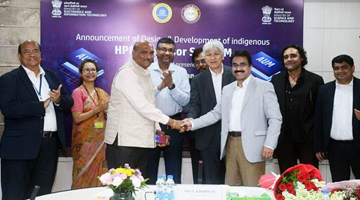Capital Good Policy Execution can make or mar or #Make In India
JUNE 03, 2016
By TIOL Edit Team
THE National Capital Goods Policy (NCGP), which was approved by the Union Cabinet on 25th May, offers complex mix of challenges and opportunities to both the Governments and the industry.
Capital goods sector comprises more than two dozen segments or industries that produce equipment for a wide range of manufacturing and service industries. The interests of all stakeholders in this vast sphere of economic activities are always varied and often conflicting.
Creating synergies between these sectors and convincing all stakeholders to look at long-term advantage of robust indigenous capital goods industry are herculean task. Here one has to factor in the need for seeking cooperation of States too, whose multiple taxes and flawed tendering for different projects hurt interest of capital goods sector.
NCGP would thus test Modi Government's policy implementation skills. It would examine its capability to build consensus among all stakeholders to provide a favourable ecosystem for growth and expansion of capital goods sector.
As put by the 103-page mega Policy, which is like a committee report, "The smooth implementation and effectiveness of the policy will require alignment and joint action of several ministries and departments and have implications on multiple stakeholders and user industries. To this end, a governance mechanism has been proposed in the form of inter-ministerial and inter-departmental committees at the highest level to ensure due consideration of the interests of all stakeholders. The committees will be tasked with driving coordinated action and monitoring the progress and effectiveness of policy on an annual basis."
This coordination strategy is highly unlikely to deliver desired outcomes. The Government should set up an empowered standing committee of secretaries, to resolve issues that would arise during the policy implementation.
The proposed panel should be delegated powers to address issues of inverted duty structure (IDS) that keep cropping up due to dynamic nature of globalized trade. IDS problem keeps getting accentuated due to signing of free trade agreements (FTAs) and other preferential trade pacts that Department of Commerce is always plugging for. The Government should put a freeze on signing of new FTAs and ensure that existing ones result in balanced trade, if not rise in exports to FTA countries.
NCGP rightly calls for formulation of a long term, stable and rationalized tax and duty structure. It has pitched for uniform Goods and Services Tax (GST) regime across all capital goods sub-sectors with import duty after set-off to ensure level playing field against imports. It also advocates parity of import duty structure with domestic duties, for example, equalize Countervailing Duty (CVD) and Excise duty; and Special Additional Duty (SAD) with Sales tax/ VAT or GST (as applicable).
Tariff Commission has done several in-depth valuable studies on competitiveness of capital goods, which don't find any mention in NCGP. It is thus difficult to know whether the Government has factored in the findings and recommendations of such studies, commissioned by different ministries, while preparing the Policy.
Some studies deserve specific mention to understand why capital goods industry has been on the decline since the reform. The studies include: Import of second hand machinery and their impact on domestic manufacturers of capital goods and their competitiveness; Impact Assessment of FTAs/ PTAs on Capital Goods; Input Cost Study on Sub-Sectors of Capital Goods; Competitiveness of Indian Manufacturers Vs. Chinese Manufacturers in respect of Capital Goods and Impact of Liberalization/Tariff Reduction on HMT and other Public Sector Enterprises.
A missing link in the Policy is the need for facilitation of growth of engineering, procurement and construction (EPC) business at home and abroad. EPC or turnkey companies serve as channels for supply of diverse capital goods to project developers.
The Government must thus strive for imaginative policy stimulus for strong bonding between capital goods, EPC and consultancy businesses.
Projects exports and deemed exports are two other areas that should be monitored and managed well to enhance export of capital goods.
The Government should set time-lines for implementation of numerous recommendations contained in NCGP.
NCGP, if implemented whole-heartedly and methodically, can serve as bulwark for renaissance of manufacturing, which has been clinically weakened under the garb of economic reforms since mid-1991.
The Policy provides for increase production of capital goods from Rs.2,30,000 crore in 2014-15 to Rs.7,50,000 crore in 2025. It calls for and raising direct and indirect employment from the current 8.4 million to 30 million. It also envisages increasing exports from the current 27 percent to 40 percent of production.














